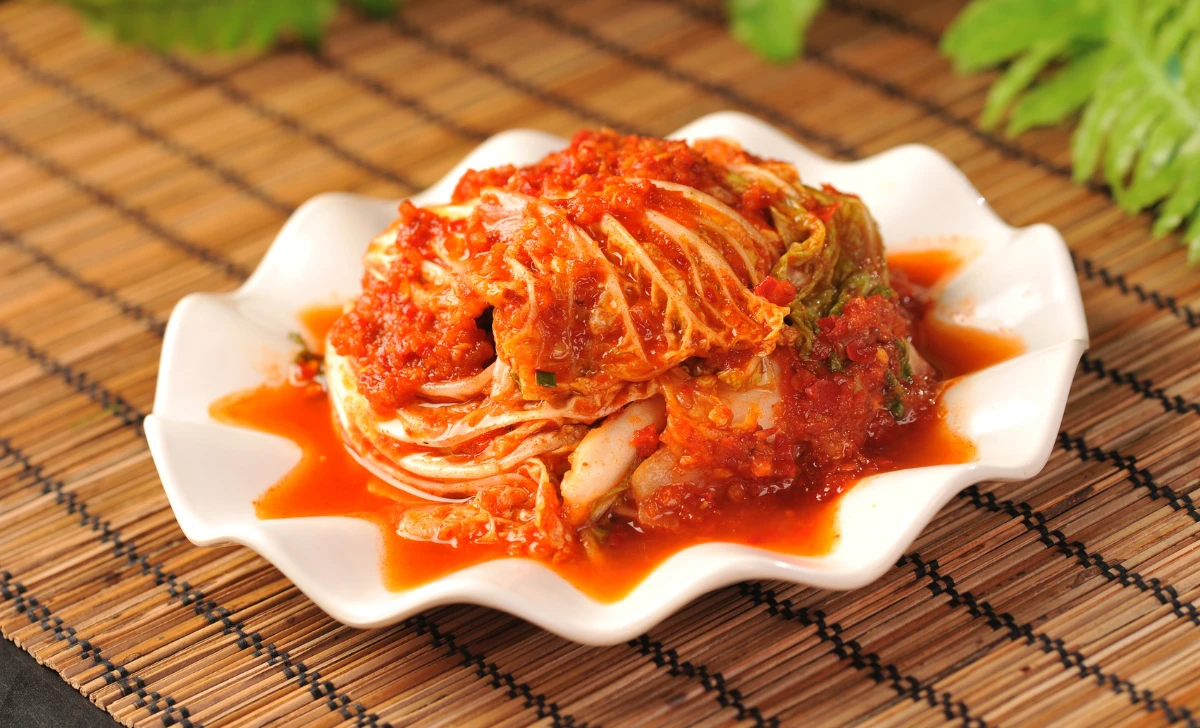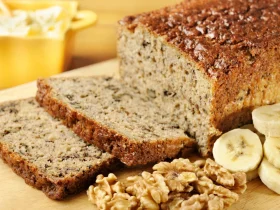Hey there foodies! If you’re a fan of Korean cuisine or just looking to spice up your taste buds, you’re in for a treat. Today, we’re diving headfirst into the world of kimchi – that tangy, spicy, and utterly delicious Korean staple. Get ready to tantalize your senses as we walk you through a step-by-step guide to creating your very own mouthwatering kimchi right in the comfort of your kitchen. So, let’s roll up our sleeves, grab some aprons, and let the culinary adventure begin!
[ez-toc]
History
The history of kimchi is a tale of preservation, innovation, and cultural heritage that spans centuries. The origins of this beloved Korean dish can be traced back to ancient times when the need to store vegetables for extended periods led to the development of various preservation methods, including fermentation.
The earliest form of kimchi was quite different from what we know today. Around 37 BCE, during the Three Kingdoms period in Korea, people began preserving vegetables by pickling them in salt and storing them in clay pots. This early version of kimchi was simple, yet effective, allowing people to have a source of vegetables during the harsh winter months when fresh produce was scarce.
As the centuries passed, kimchi continued to evolve and adapt to the changing culinary landscape of Korea. In the 7th century, with the introduction of Buddhism, vegetarianism became prevalent in Korean culture. This led to the creation of “white kimchi,” a variation made without chili peppers or fish sauce, to cater to the dietary needs of Buddhist monks.
Fast forward to the Joseon Dynasty (1392-1897), and kimchi had become an integral part of Korean cuisine and culture. It was not just a method of preservation anymore but a symbol of Korean identity and unity. Each region developed its own unique style of kimchi, using locally available ingredients and spice blends, leading to a rich tapestry of kimchi varieties across the country.
During the 18th and 19th centuries, Korean traders traveled to neighboring countries, introducing kimchi to Japan and parts of China. This cultural exchange led to further variations and the adoption of kimchi in those regions as well.
The modern form of kimchi, as we know it today, took shape in the early 20th century. With the introduction of chili peppers to Korea during the Japanese occupation, kimchi underwent a spicy transformation, becoming the vibrant and flavorful dish we cherish today. The addition of chili peppers revolutionized kimchi-making, making it a delightful blend of heat and tanginess.
In more recent times, the popularity of Korean cuisine globally has also contributed to the widespread appreciation of kimchi. With the advent of refrigeration and modern food preservation techniques, kimchi is now enjoyed throughout the year, not just during the winter season.
Today, kimchi has transcended its cultural boundaries and is celebrated worldwide for its unique taste and health benefits. Korean restaurants around the globe proudly serve this beloved dish, and adventurous food enthusiasts have taken up the challenge of making their own homemade kimchi.
With its rich history and vibrant flavors, kimchi remains not just a culinary delight but also a symbol of Korean culture and resilience. It continues to be passed down through generations, preserving the legacy of Korean traditions and the art of fermentation, reminding us that some things only get better with time. So, the next time you savor that spicy, tangy, and utterly delicious kimchi, remember that you’re tasting a slice of history that has been perfected over centuries.
Time
| Step | Time |
|---|---|
| Gathering Supplies | 10 minutes |
| Selecting Vegetables | 20 minutes |
| Preparing Vegetables | 1 hour |
| Making Kimchi Paste | 15 minutes |
| Massaging the Vegetables with Paste | 10 minutes |
| Packing Kimchi in Jars or Containers | 10 minutes |
| Initial Fermentation (Room Temperature) | 2-4 hours |
| Controlling Fermentation (Burping) | 1-2 days |
| Longer Fermentation (Flavor Development) | 1-2 weeks |
| Checking Kimchi Maturity | 2-3 weeks |
Note: The preparation time may vary depending on individual cooking skills and familiarity with the recipe.
Ingredients
| Vegetables | Seasoning and Others |
|---|---|
| 1 small Napa cabbage | 1/4 cup Korean red pepper flakes (gochugaru) |
| 3-4 Korean radishes | 5-6 cloves of garlic, minced |
| 4-5 scallions | 1 tablespoon fresh ginger, grated |
| 2 carrots | 2 tablespoons fish sauce (or vegan alternative) |
| 1 teaspoon sugar | |
| Kitchen gloves (for handling chili peppers) |
Directions
Step 1: Prepare the Vegetables
- Wash the Vegetables: Thoroughly wash the Napa cabbage, Korean radishes, scallions, and carrots under cool running water. Make sure to remove any dirt or impurities from the vegetables.
- Cut the Vegetables: Cut the Napa cabbage into quarters and remove the core. Slice the cabbage into bite-sized pieces. Peel the Korean radishes and carrots, then cut them into thin matchsticks. Finely chop the scallions.
- Brine the Cabbage: In a large mixing bowl, sprinkle a generous amount of salt between the cabbage leaves. Let it sit for 1 hour to draw out excess moisture. Rinse the cabbage under cold water and drain thoroughly.
Step 2: Prepare the Kimchi Paste
- Blend the Ingredients: In a food processor, combine the Korean red pepper flakes (gochugaru), minced garlic, grated ginger, fish sauce (or vegan alternative), and sugar. Blend until you have a smooth and vibrant kimchi paste.
Step 3: Massage and Pack the Kimchi
- Massage with the Kimchi Paste: Put on your kitchen gloves to protect your hands. Take the prepared vegetables and massage the kimchi paste into every nook and cranny, ensuring each piece is thoroughly coated.
- Pack the Kimchi: Carefully layer the kimchi in glass jars or airtight containers, pressing it down gently as you go to remove any air bubbles. Leave some space at the top to allow for expansion during fermentation.
Step 4: Initial Fermentation
- Seal the Jars Loosely: Seal the jars or containers, but not too tightly. Allow some room for gas to escape during the initial fermentation process.
- Ferment at Room Temperature: Let the kimchi sit at room temperature for 2 to 4 hours to kickstart the fermentation process and develop the flavors.
Step 5: Controlling the Fermentation
- Burp the Jars: After the initial fermentation, open the jars slightly to release any built-up gas, then seal them again. This helps control the fermentation process and prevents excessive pressure.
Step 6: Longer Fermentation
- Store in a Cool Place: Move the sealed jars to a cool, dark place, such as a pantry or cupboard. Let the kimchi ferment for 1 to 2 weeks to develop its full flavor and probiotic goodness.
Step 7: Check Kimchi Maturity
- Taste and Check: Around 2 to 3 weeks into fermentation, check the kimchi for maturity. Taste a small portion to see if it has reached the desired level of tanginess and spiciness.
And there you have it! Your very own homemade kimchi is ready to be enjoyed. Remember, kimchi gets better with time, so let it ferment longer if you prefer a more robust flavor. Once your kimchi reaches the perfect maturity, you can store it in the refrigerator to slow down the fermentation process and enjoy it for weeks to come. Happy kimchi-making!
Equipment Required
Nutrition Information
| Nutrient | Amount per Serving |
|---|---|
| Serving Size | 1 cup (approximately) |
| Calories | 50 calories |
| Total Fat | 0.5g |
| Saturated Fat | 0.1g |
| Trans Fat | 0g |
| Cholesterol | 0mg |
| Sodium | 700mg |
| Total Carbohydrate | 11g |
| Dietary Fiber | 2g |
| Total Sugars | 5g |
| Protein | 2g |
| Vitamin D | 0mcg (0% DV) |
| Calcium | 100mg (8% DV) |
| Iron | 2mg (10% DV) |
| Potassium | 300mg (6% DV) |
Please note that the nutrition information is approximate and may vary depending on the specific ingredients and quantities used in your homemade kimchi. Additionally, the percentages of daily values (DV) are based on a 2,000-calorie diet.
Tips
- Quality of Ingredients: Use fresh and high-quality vegetables for the best-tasting kimchi. Look for firm Napa cabbage, crisp radishes, and vibrant green scallions.
- Salt for Brining: Use sea salt or kosher salt for brining the cabbage. Avoid table salt, as it contains additives that may interfere with the fermentation process.
- Gloves for Handling Chili Peppers: Wear kitchen gloves when massaging the kimchi paste into the vegetables, especially if you’re sensitive to chili peppers. It helps protect your hands from irritation.
- Fermentation Time: The fermentation time depends on personal preference. Taste your kimchi regularly to find the level of tanginess and spiciness that suits your taste buds.
- Temperature and Environment: Warmer temperatures generally result in faster fermentation, while cooler temperatures slow it down. Experiment with different environments to control the fermentation process.
- Sanitize Jars or Containers: Before packing the kimchi, make sure the jars or containers are thoroughly cleaned and sanitized to prevent unwanted bacteria.
- Release Air Bubbles: When packing the kimchi into jars, press down gently to remove air bubbles, ensuring that the kimchi is packed evenly.
- Keep the Kimchi Submerged: Make sure the kimchi is fully submerged in its liquid to prevent mold growth on the exposed parts.
- Label and Date the Jars: Label each jar with the date of preparation to keep track of the fermentation process. This helps you know when the kimchi is ready for consumption.
Pros & Cons
| Pros | Cons |
|---|---|
| ✔ Bursting with Flavor | ❌ Time-Consuming to Prepare |
| ✔ Nutrient-Rich | ❌ Strong Smell During Fermentation |
| ✔ Probiotic Goodness | ❌ May Be Too Spicy for Some |
| ✔ Customizable | ❌ Requires Careful Fermentation |
| ✔ Cultural Experience | ❌ Not Suitable for Low-Sodium Diets |
Conclusion
In conclusion, venturing into the world of homemade kimchi is a delightful journey that promises to tantalize your taste buds and nourish your body. This traditional Korean dish brings together the vibrant flavors of fresh vegetables, aromatic spices, and the magic of fermentation. As you prepare your very own kimchi, you embark on a culinary adventure that is not only rewarding but also a celebration of cultural heritage.
With each crunchy and tangy bite, you’ll experience a burst of flavors that are uniquely yours, as kimchi is entirely customizable to suit your preferences. From adjusting the spice level to experimenting with different vegetables, the possibilities are endless. Beyond its delectable taste, kimchi offers a wealth of health benefits, such as being a probiotic powerhouse and a rich source of essential vitamins and minerals.
Yes, preparing homemade kimchi requires a bit of time and patience, but the result is a jar filled with not just a dish, but a piece of Korean history and tradition. So, if you’re seeking to add an exciting and nutritious twist to your meals, why not roll up your sleeves, don your kitchen gloves, and embark on this kimchi-making adventure?
Let the room fill with the delightful aroma of fermentation, and watch as your kimchi transforms over time, reaching the perfect level of tanginess and spice. Whether you enjoy it as a side dish, a topping for your favorite dishes, or even incorporated into fusion creations, the joy of homemade kimchi is in its versatility and cultural richness.
So, let’s get started! Gather your ingredients, put on your apron, and dive into the world of kimchi-making. Your taste buds and your gut will thank you for this flavorful and nutritious addition to your culinary repertoire. Embrace the experience, and savor the rewards of creating something both delicious and meaningful. The journey awaits you, so go ahead, give it a try, and let the magic of kimchi unfold in your kitchen. Happy fermenting! 🌶️🥬🌿🍚
Facts
- 🌶️ Kimchi’s Fiery Origins 🌶️
- Did you know that before chili peppers were introduced to Korea in the 16th century, kimchi wasn’t the spicy dish we know today? It was actually a mild, non-spicy pickled vegetable dish. The addition of chili peppers transformed kimchi into the bold and fiery delight it is now!
- 🥬 A Royal Stamp of Approval 🥬
- Kimchi wasn’t just a commoner’s dish in ancient Korea; it even had the royal seal of approval! The royal court of the Joseon Dynasty had its own kimchi-making ceremony, where skilled artisans prepared a wide variety of kimchi to be served to the king and his courtiers.
- 🌿 Kimjang Day: UNESCO’s Honor 🌿
- Kimchi’s cultural significance is so immense that it was designated as an Intangible Cultural Heritage by UNESCO. The annual “Kimjang Day” celebration in South Korea honors the tradition of kimchi-making, bringing communities together in the spirit of sharing and preservation.
- 🍚 Kimchi in Space 🚀
- In 2008, South Korea’s first astronaut, Yi So-yeon, took kimchi to space! She carried a special vacuum-packed version of the dish to enjoy during her time on the International Space Station. Kimchi truly conquered new culinary frontiers beyond Earth!
- 👨🍳 Get Creative with Kimchi! 👩🍳
- Kimchi has gone beyond its traditional roots and has found its way into fusion cuisine around the world. From kimchi tacos and kimchi burgers to kimchi pizza, creative chefs are combining this Korean staple with global flavors for mouthwatering culinary innovations.
FAQ’s
How long does homemade kimchi last?
Properly stored in the refrigerator, homemade kimchi can last for several months. As it ferments, the flavors will continue to develop, so it’s best enjoyed within the first few weeks for optimal taste.
Can I reduce the spiciness of the kimchi?
Absolutely! Adjust the amount of Korean red pepper flakes (gochugaru) to make the kimchi milder or spicier, depending on your preference.
Can I make vegan kimchi?
Yes, you can! Substitute fish sauce with soy sauce or tamari, and skip any animal-based ingredients. Vegan kimchi is just as flavorful and delicious.
Can I use different vegetables for kimchi?
Absolutely! While Napa cabbage is the traditional base, you can use various vegetables like Korean radishes, cucumbers, or carrots to create unique variations.
How do I prevent my kimchi from becoming too salty?
Rinse the brined cabbage thoroughly after soaking it in saltwater. Additionally, you can adjust the salt quantity during the brining process to suit your taste.
My kimchi is too spicy. How can I tone it down?
To reduce the spiciness, mix in some chopped vegetables like cucumber or Korean pear. The sweetness will balance out the heat.
Can I use kimchi in cooking?
Absolutely! Kimchi adds a delightful flavor to various dishes. Try making kimchi fried rice, kimchi pancakes (kimchijeon), or even kimchi grilled cheese sandwiches!
How do I know if my kimchi is fermenting properly?
You’ll notice bubbles forming in the liquid, and the kimchi will develop a tangy and slightly sour taste as it ferments. A slightly fizzy sensation when tasting is a good sign of fermentation.
Can I store kimchi at room temperature?
It’s best to store kimchi in the refrigerator once you’re satisfied with its taste. Refrigeration slows down fermentation, keeping the kimchi fresh for longer.
Can I reuse the liquid left after consuming kimchi?
Absolutely! Kimchi juice is packed with flavor and can be used as a marinade for meats, added to stews, or even sipped as a tangy probiotic drink.













Leave a Reply